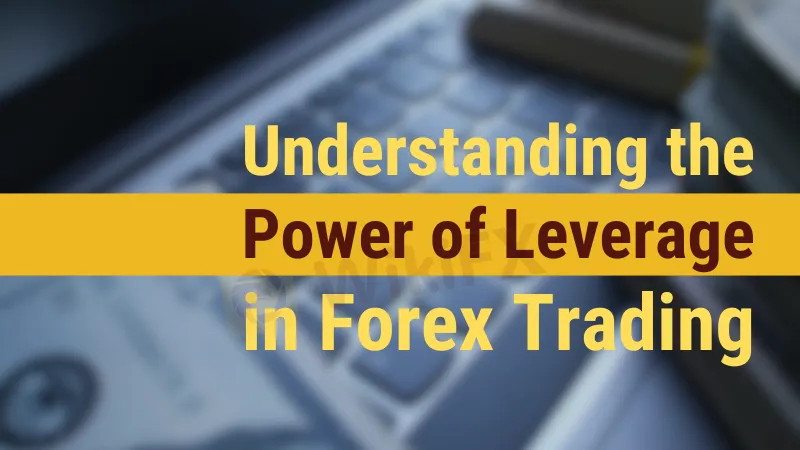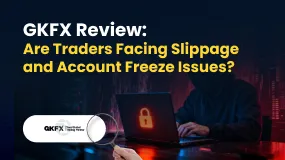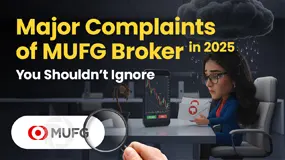简体中文
繁體中文
English
Pусский
日本語
ภาษาไทย
Tiếng Việt
Bahasa Indonesia
Español
हिन्दी
Filippiiniläinen
Français
Deutsch
Português
Türkçe
한국어
العربية
Understanding the Power of Leverage in Forex Trading
Abstract:Master the art of leverage in forex trading with our comprehensive guide. Learn how to maximize profits while managing risks effectively.

Introduction to Leverage in the Forex Market
Leverage in forex trading represents the strategy of using borrowed funds to increase potential investment returns. It's a widely utilized concept in the forex market, allowing traders to control positions that far exceed their actual capital. This approach can significantly enhance profits from favorable currency exchange rate movements. However, the use of leverage is akin to a double-edged sword, as it also amplifies potential losses. Understanding and effectively managing leverage, along with employing robust risk management strategies, is crucial for anyone participating in the forex market.
The Forex Market: A Global Trading Platform

As the world's largest financial market, the forex market boasts more than $5 trillion in daily transactions. Traders engage in the buying and selling of currencies, seeking to benefit from changes in exchange rates. The market operates on the bid-and-ask prices provided by brokers. If an investor wants to buy a currency, they pay the asking price, and when selling, they receive the bid price. The difference between these prices represents the trader's profit or loss, depending on the currency's movement.
Understanding Leverage in Forex Trading
Leverage in forex is essentially a loan provided by the broker to the investor. It allows traders to open larger positions than their capital would typically permit. Forex accounts are set up to enable trading on margin – using borrowed funds. While new traders might face limits on the amount of leverage they can use, more experienced traders often have the flexibility to choose their desired level of leverage. However, brokers require a certain percentage of the trade's total value to be kept in the account as the initial margin.
| Margin Requirement | Leverage Ratio |
| 2% | 50:1 |
| 1% | 100:1 |
| .5% | 200:1 |
Different Leverage Ratios and Their Impact
The leverage ratio is crucial in forex trading as it determines how much a trade's size is increased by the employed margin. For example, a 100:1 leverage ratio means that a $1,000 deposit allows a trader to control a $100,000 position. The initial margin requirement varies among brokers and directly affects the leverage available to a trader. Typically, a lower margin requirement offers higher leverage, increasing both the potential return and risk.
Exploring Trade Sizes and Margin Requirements
Forex trades range from standard lots (100,000 units of currency) to smaller amounts. Leverage ratios and margin requirements vary with trade size. Larger trades might attract lower leverage like 50:1, requiring a 2% margin. These requirements fluctuate based on the currency pair and market conditions. High volatility in emerging market currencies often leads to higher margin requirements.
The Risks of Forex Leverage

The use of leverage in forex trading can lead to significant profits but also substantial losses. The risk is magnified, as demonstrated by comparing different leverage strategies. For example, a trader using 50 times leverage could experience drastic financial outcomes compared to one using less leverage. Understanding leverage mechanics and employing risk management strategies is vital for traders.
Detailed Analysis of Leverage in Forex Trading
Forex leverage allows traders to access significant sums of money without needing the full amount of capital typically required for such trades. This capability enables traders to magnify their trading results, but it also increases the potential for substantial losses.
Leverage and Its Role in Profit Maximization
The primary purpose of using leverage in forex trading is to amplify potential profits. When a trader predicts the market movement correctly, leverage can significantly boost their returns. For instance, if a currency pair moves favorably by a small percentage, the actual return on the traders equity can be much larger due to the leveraged position.
Diverse Types of Leverage Ratios
Leverage ratios in forex can range widely, from as low as 5:1 to as high as 500:1, depending on the broker and the traders experience and risk appetite. These ratios provide traders with flexibility in their trading strategies, allowing them to choose a level of leverage that aligns with their risk tolerance and trading objectives.
Case Studies: Leverage in Action
To illustrate the impact of leverage, consider two traders with different approaches. Trader A uses a high leverage of 100:1, while Trader B opts for a more conservative 10:1 leverage. In a favorable market scenario, Trader A‘s profits are substantially higher than Trader B’s. However, in an adverse market move, Trader A also faces much greater losses, potentially wiping out a significant portion of its capital.
| Trader A | Trader B | |
| Trading Capital | $10,000 | $10,000 |
| Real Leverage Used | 50 times | 5 times |
| Total Value of Transaction | $500,000 | $50,000 |
| In the Case of a 100-Pip Loss | -$4,150 | -$415 |
| % Loss Of Trading Capital | 41.5% | 4.15% |
| % of Trading Capital Remaining | 58.5% | 95.8% |
Strategies for Managing Leverage Risks
Effective risk management is crucial in leveraged forex trading. This includes setting stop-loss orders to limit potential losses, monitoring trades closely, and being aware of market events that could cause significant price movements. Traders should also avoid over-leveraging their positions and should diversify their investments to spread risk.
The Impact of Market Volatility on Leverage
Market volatility can significantly affect leveraged trades. During periods of high volatility, even small price movements can lead to large gains or losses. Traders need to be especially cautious during such times and may need to adjust their leverage and margin requirements accordingly.
Regulatory Aspects of Forex Leverage

Regulations on leverage vary by country and are put in place to protect traders from the risks associated with high leverage. For instance, in some jurisdictions, the maximum allowable leverage is capped to prevent excessive risk-taking by traders. Understanding these regulations is important for traders to ensure compliance and to make informed decisions about their trading strategies.
Advanced Techniques in Leveraged Forex Trading
Experienced traders often use advanced techniques like hedging and scalping to manage risks associated with leverage. Hedging involves opening multiple positions to offset potential losses, while scalping involves making quick trades to capitalize on small market movements. These techniques require a deep understanding of the market and should be used cautiously.
Leverage in Different Forex Instruments
Different forex instruments, such as currency pairs, CFDs (Contracts for Difference), and futures, offer varying levels of leverage. Traders should understand the specifics of each instrument, including the leverage available and the associated risks.
Conclusion: Balancing Reward and Risk with Leverage
Leverage in forex trading can be a powerful tool for amplifying returns but comes with significant risks. Traders must carefully consider their use of leverage, understand the associated risks, and employ sound risk management strategies. By doing so, they can leverage the power of borrowed capital to potentially enhance their trading performance while keeping potential downsides in check. As with any investment strategy, education, careful planning, and disciplined execution are key to successfully using leverage in forex trading.

Disclaimer:
The views in this article only represent the author's personal views, and do not constitute investment advice on this platform. This platform does not guarantee the accuracy, completeness and timeliness of the information in the article, and will not be liable for any loss caused by the use of or reliance on the information in the article.
Read more

Seacrest Markets Exposed: Are You Facing Payout Denials and Spread Issues with This Prop Firm?
Seacrest Markets has garnered wrath from traders owing to a variety of reasons, including payout denials for traders winning trading challenges, high slippage causing losses, the lack of response from the customer support official to address withdrawal issues, and more. Irritated by these trading inefficiencies, a lot of traders have given a negative review of Seacrest Markets prop firm. In this article, we have shared some of them. Take a look!

GKFX Review: Are Traders Facing Slippage and Account Freeze Issues?
Witnessing capital losses despite tall investment return assurances by GKFX officials? Do these officials sound too difficult for you to judge, whether they offer real or fake advice? Do you encounter slippage issues causing a profit reduction on the GKFX login? Is account freezing usual at GKFX? Does the United Kingdom-based forex broker prevent you from accessing withdrawals? You are not alone! In this GKFX review guide, we have shared the complaints. Take a look!

Is Seaprimecapitals Regulated? A Complete Look at Its Safety and How It Works
The straightforward answer to this important question is no. Seaprimecapitals works as a broker without proper regulation. This fact is the most important thing any trader needs to know, because it creates serious risks for your capital and how safely the company operates. While this broker offers some good features, like the popular MetaTrader 5 platform and a low starting deposit, these benefits cannot make up for the major risks that come from having no real financial supervision. This article will give you a detailed, fact-based look at Seaprimecapitals regulation, what the company claims to do, the services it provides, and the clear differences between official information and user reviews. Our purpose is to give you the information you need to make a smart decision about the risks and benefits of working with this company.

Major Complaints of MUFG Broker in 2025 You Shouldn’t Ignore
2025 is about to end, and if you still want to be a trader or investor and are looking for a broker to invest with. It is important to read real user complaints first. This will help you understand the kind of problems users are facing with MUFG broker. In this article, we will tell you about the major complaints users have reported about MUFG in 2025, so you know what to watch out for. Do not ignore this MUFG broker article and understand the problems.
WikiFX Broker
Latest News
CQG Partners with Webull Singapore to Power the Broker’s New Futures Trading Offering
【WikiEXPO Global Expert Interviews】Ashish Kumar Singh: Building a Responsible and Interoperable Web3
IEXS Review 2025: A Complete Expert Analysis
CySEC Flags 21 Unauthorized Broker Websites in 2025 Crackdown
IEXS Regulation: A Complete Guide to Its Licenses and Safety Warnings
WinproFx Withdrawal Problems: A Complete Look at Delays and User Reports
Does WealthFX Generate Wealth or Losses for Traders? Find Out in This Review
FONDEX Review: Do Traders Really Face Inflated Spreads & Withdrawal Issues?
FXPrimus Review: Is FXPrimus Regulated and Reliable for 2025?
Simulated Trading Competition Experience Sharing
Currency Calculator



